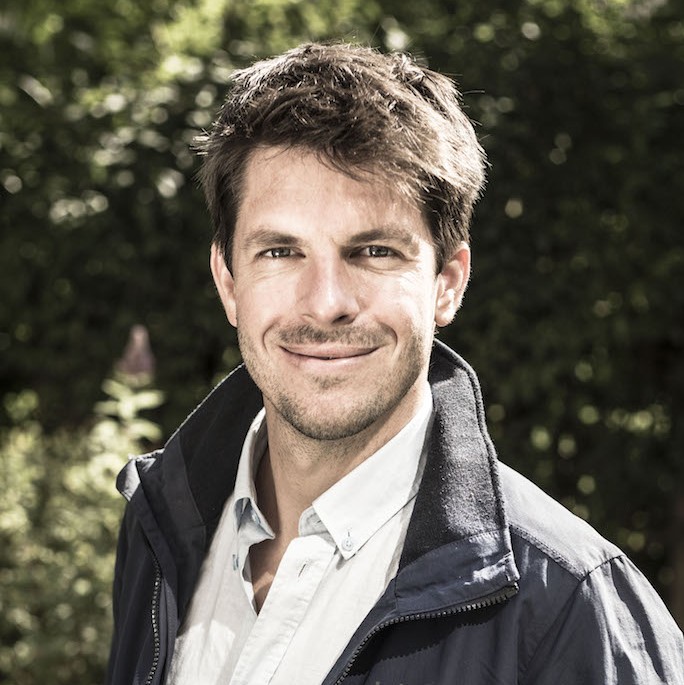Construction consolidation centres are tools for city administrations to reach emission targets through cutting back on the most polluting traffic: heavy goods vehicles. Stockholm’s Fredrik Bergman implemented Sweden’s largest CCC, the Bygglogistikcenter, which serves more than 400 construction sites at the Stockholm Royal Seaport. Two bold decisions helped the City to innovate and save millions.
Stockholm Royal Seaport (SRS) is one of the largest urban development areas in Northern Europe and a designated area with an environmental profile. An entirely new city district will be fully developed around 2035 with up to 18,000 homes for nearly 60,000 inhabitants. Having won the first European Green Capital Award in 2010, it was only natural for the City of Stockholm to build SRS with the help of a construction consolidation centre (CCC), the SRS Bygglogistikcenter.

What a Challenge!
How to govern an organization servicing a 400-sites-behemoth for at least 25 years? “First – well – first get the right expertise in”, or so Fredrik and his team thought. In a lenghtly process, they decided to tender the CCC to a consortium of two firms, one seasoned construction logistics provider and one equally experienced waste collection specialist. A seperately procured logistics consultant firm would then monitor the center.
In 2013 the four parties – the City, the two operating firms and the consultant – eagerly set up a site office, both indoor and outdoor warehouse, and a waste facility, offering up to 18 core services in total: transport, warehouse, waste management, gates booking system, construction work, fencing, security services, staff training, and electric work, among others. Six rules on how to operate on the CCC were defined and training courses were provided to staff in eleven (!) languages. “We thought about everything and the spirit was even euphoric at times”, Fredrik recalls with a telling smile.
Teething Problems
It wouldn’t take long for the first disagreements to surface. To keep half-empty trucks from entering the construction sites, service fees for construction transport had to be decided on. Due to unknown transport costs for developers and contractors, finding a balance between the costs borne by developers and the contractors respectively proved a particularly delicate task.
In a collaborative effort these and other teething problems soon got ironed out. In a series of seminars, property developers, contractors, the operating consortium and the City collaboratively discussed the business model of charging fees. Eventually, agreement was found. For example, lorries with less than 50% load are obliged to go through the warehouse, where they can store materials free of charge for 5 days – the initial 14 days proved uneconomical – and from where coordinated transports to the sites are organized. Rules like these disincentivize uncoordinated entry, and allow developers and contractors to mutually balance costs and benefits. Sorted.
Fundamental Differences
Some issues, however, run deeper than mere teething problems. Surprisingly, it was the operating consortium and the City who were – inevitably? – heading towards a decisive clash of interests. What was going on?
It’s difficult to innovate if your primary goal is a financial one
“The organizational set-up had prevented the operator from taking certain risks and actually hindered the kind of development and innovation the City had envisioned”, Fredrik explains dispassionately. In plain words: The City and the operator were slowly pulling in opposite directions. “Failing to innovate on their services”, for the City of Stockholm translates into falling behind on environmental targets. An unacceptable situation. “It’s difficult to innovate if your primary goal is a financial one,” Fredrik adds in a nod to the operating consortium.
In 2018 came Fredrik’s moment of truth. He prematurely terminated the contract with the two firms and set up a new organizational model. What had previously been bundled in one deal with the operator was now split into multiple contracts with many service providers. “The risks are now split between City, developers, entrepreneurs (…) and it’s become much easier to manage and control the system”, Fredrik defends his bold decision. It hadn’t been his first one!

Saving the City Millions
Three years earlier, Fredrik had already shown what innovation can look like. This wasn’t simply about making money. Rather, he was closing a loop which now happens to save the City millions. Fredrik calculated that the City was losing millions of Euros if they continued to transport excavation material away from the site. Therefore, not far from the Bygglogistikcenter, on the Seaport premises, he set up an entirely new operation: the mass consolidation centre. At the mass consolidation centre local (polluted) soil and water is treated, and stone crushed, before going back to the construction site to be used as building material.
This newly set up Masslogistikcenter would soon prove a gold mine: By recycling 35-40% of soil and 100% of stones and rock from the construction works, the City is saving hugely on landfill fees, transport costs, and on the purchase of ‘new’ materials. Stockholm so managed to reduce traffic between construction site and landfill by 50%, with the equivalent in saved pollutant emissions.
The collected environmental data eventually speak to both the Bygglogistikcenter’s and Masslogistikcenter’s success. As of 2020, the CCC and MCC resulted in 25% reduction of construction traffic in the work area. Coordinated waste management reduced transportation by a total of more than 50%. What’s next? We’re eager to find out whether Fredrik and his team will continue to innovate and push for even more.


